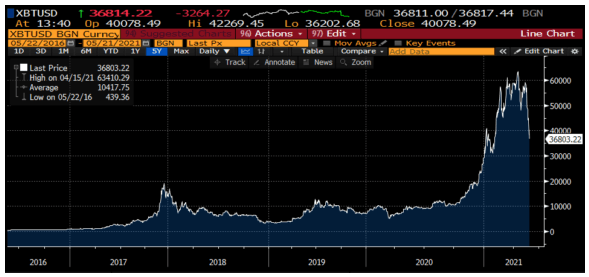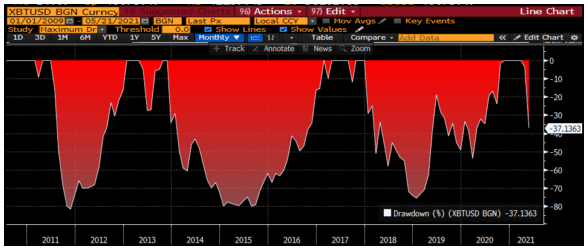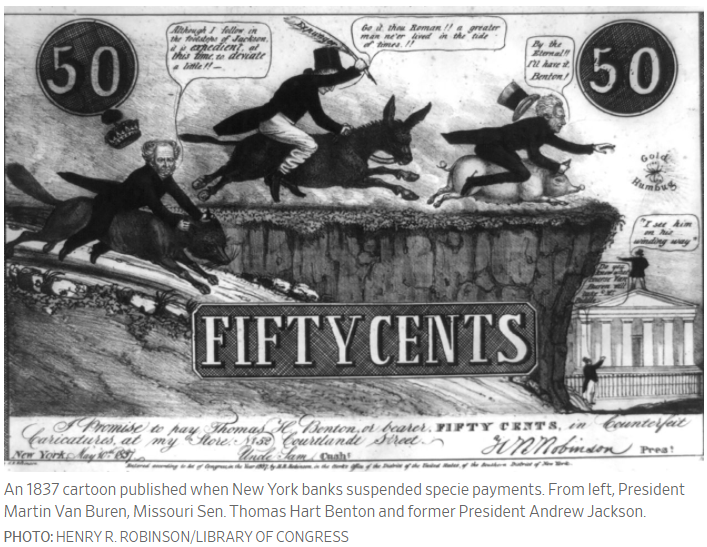Over our nation’s history, we have had private citizens and businesses issue money. For example, in 1830, 90% of the U.S. money supply took the form of private banknotes. Canal, turnpike, coal mining, railroad and lumber companies all issued money, often called scrip, to pay workers. Unfortunately for the workers, this scrip was only good at face value at the company store and worth less (i.e. sold at a discount) if traded for dollars to be used elsewhere. From 1820 – 1875, private transportation companies, merchants and farmers issued a significant amount of small denomination currency – denominated in dollars or in goods and services rendered (i.e. miles of railroad service). Their purpose was to have a currency suited for making small purchases, having a medium of exchange in remote locations and having a means of exchange during financial panics.
During the twentieth century’s Great Depression, bank runs were a rather common occurrence. Banks often responded to the “runs” by suspending payments – i.e. not allowing depositors to get their cash, which in turn made it difficult for people to pay bills. In response, school districts, merchants, local relief agencies and individuals issued private money as did state and city governments. So having “private money” is not a novel idea in America. But it is also an idea which has not met with any particular success.
The latest iteration comes in the form of so-called cryptocurrency to replace fiat currencies which have been and are constantly being debased according to “crypto” advocates, with Bitcoin being the most popular. Following, please find a couple of interesting charts.
CHART 1- SOURCE: BLOOMBERG
CHART 2- SOURCE: BLOOMBERG
In Chart 1, the reader will note the huge rise in the value of Bitcoin followed by a rather sharp falloff. In Chart 2, the reader will see that Bitcoin has had three 80% declines in its short 10-year history. Certainly, Bitcoin (as well as the rest of the “cryptos”) is not for the “faint hearted”.
Is Bitcoin or its brethren really a medium of exchange? To qualify, cryptocurrency would have to be relatively stable in value to allow its use in trade and would have to be liquid. Charts 1 & 2 would suggest an answer of “no” regarding stability. As to liquidity, not many people deal in cryptocurrency – so the market is localized amongst its adherents, which would suggest that there is not much liquidity, especially as compared to the U.S. dollar, the Yen or the Euro.
Private money has been developed in various forms and fashions over the centuries in the U.S. without success. To replace (at least in part) the U.S. dollar, the world’s reserve currency, which is an intention of the Bitcoin believers, one must believe wholeheartedly in the future value of Bitcoin despite its record of volatility and lack of liquidity. The history of private money would suggest that is too tall a mountain to climb




